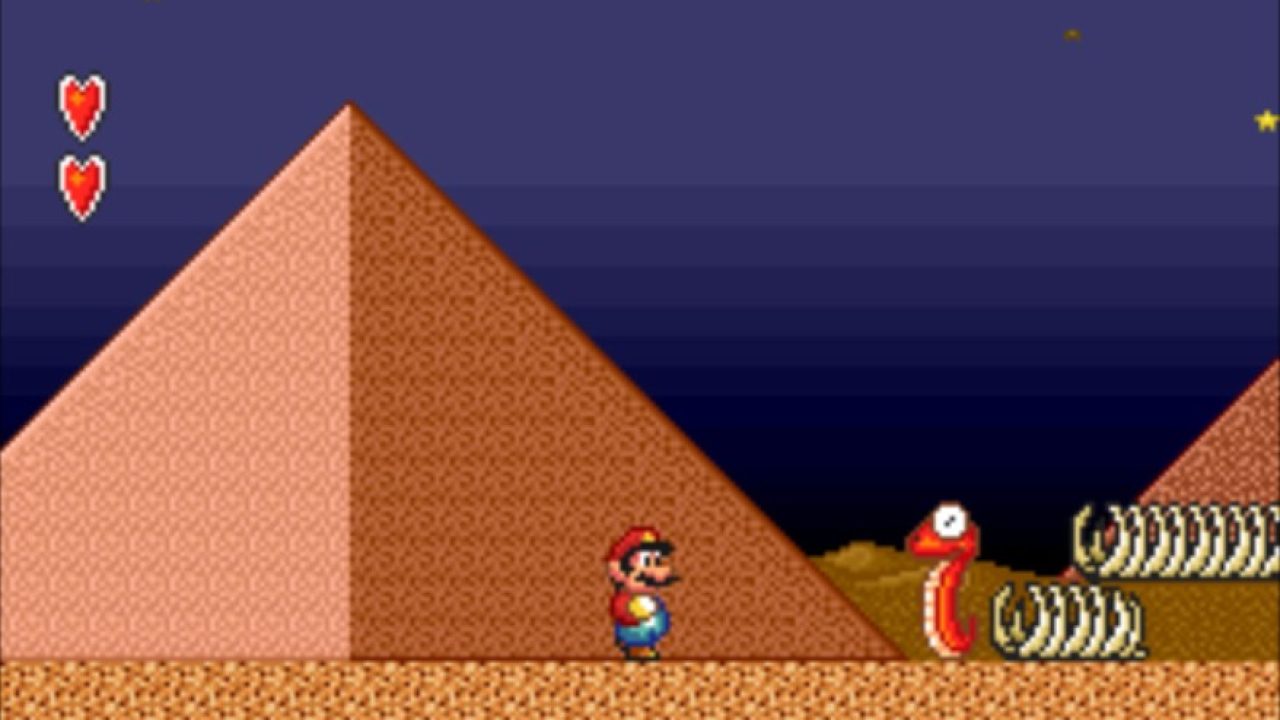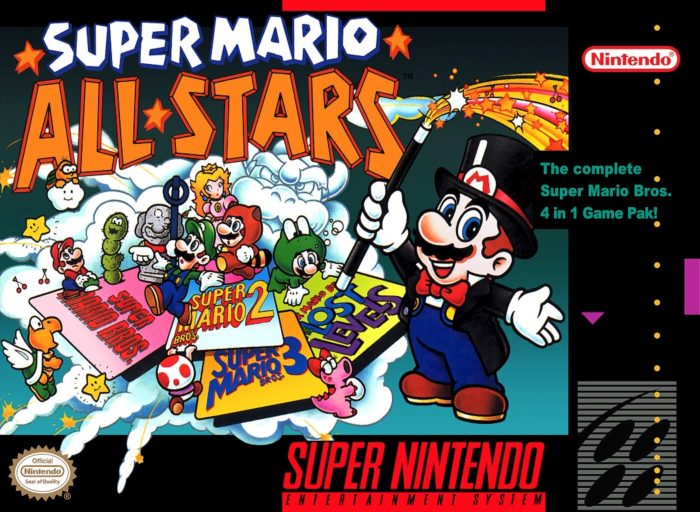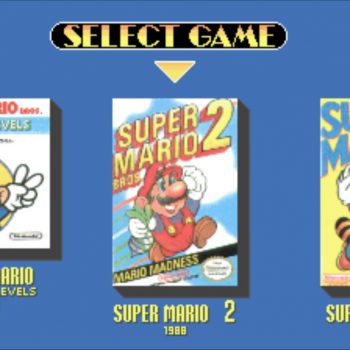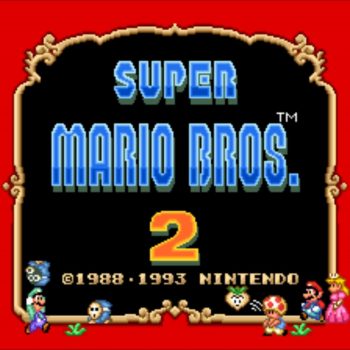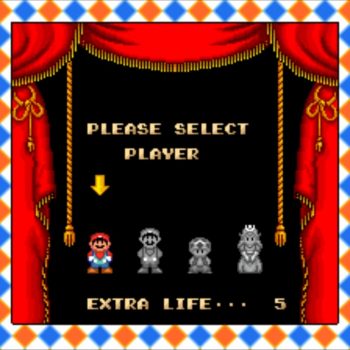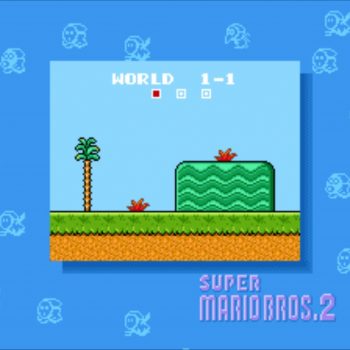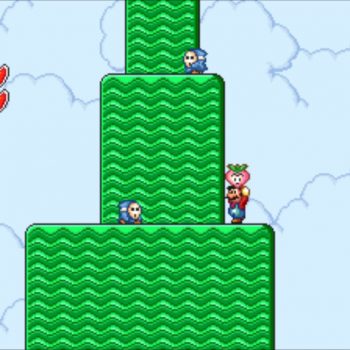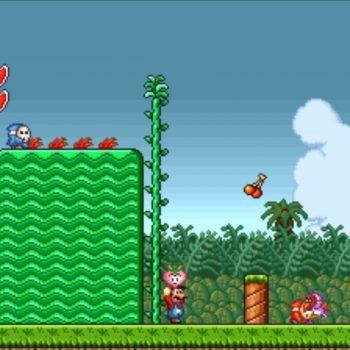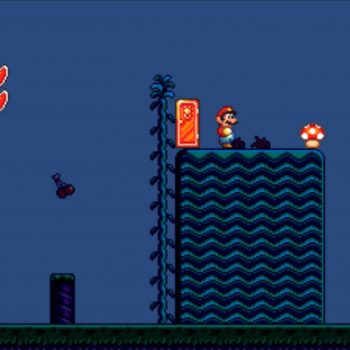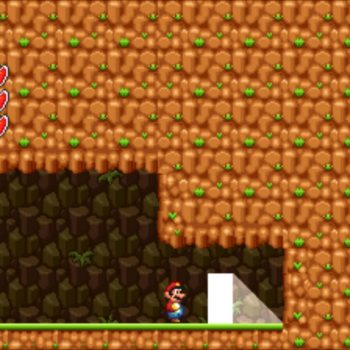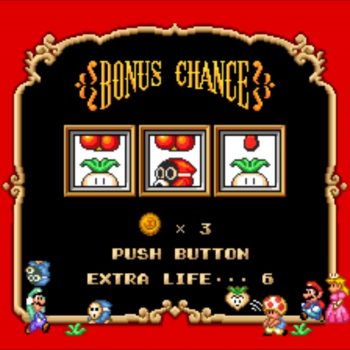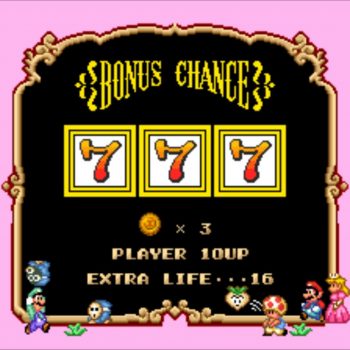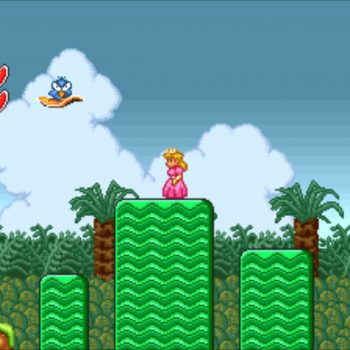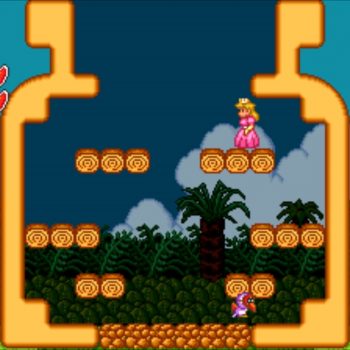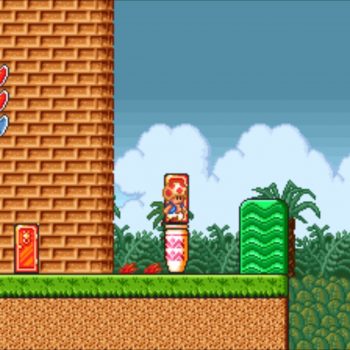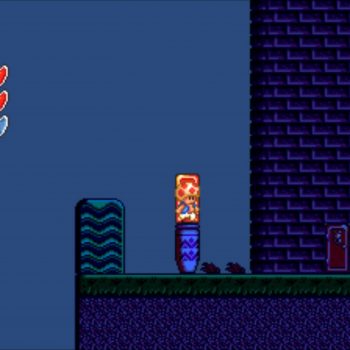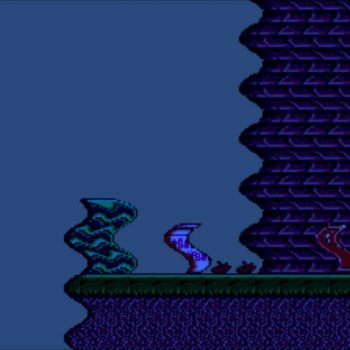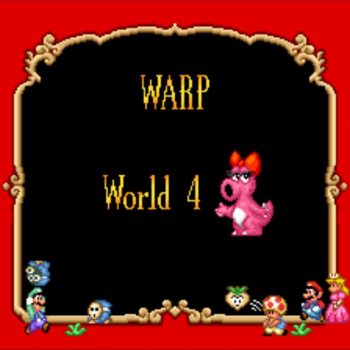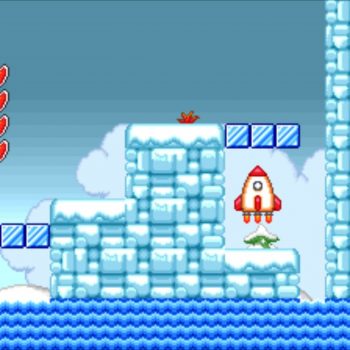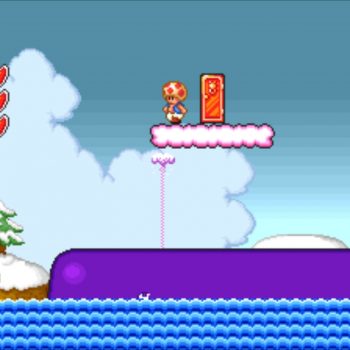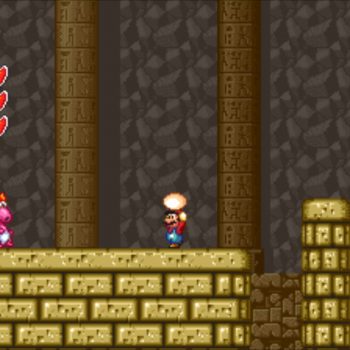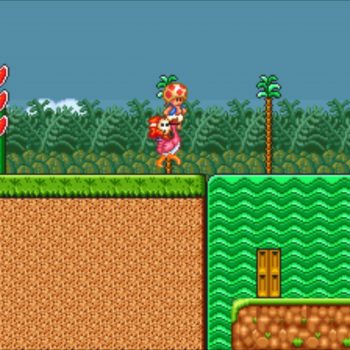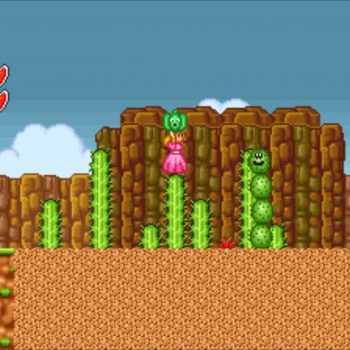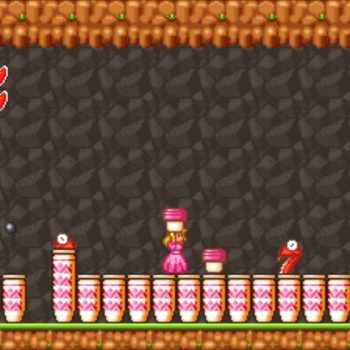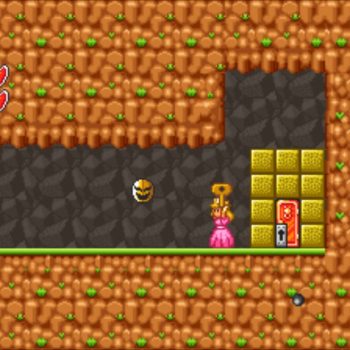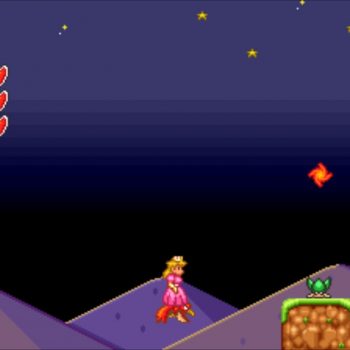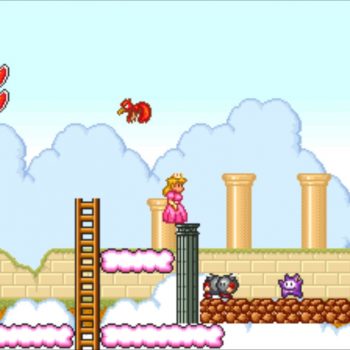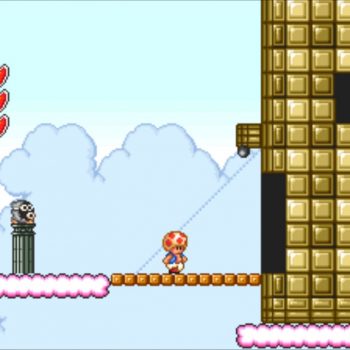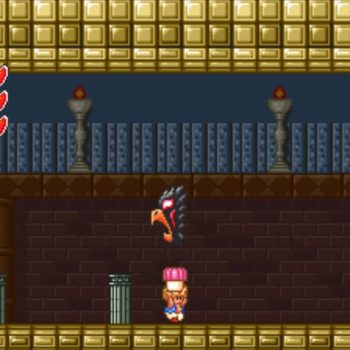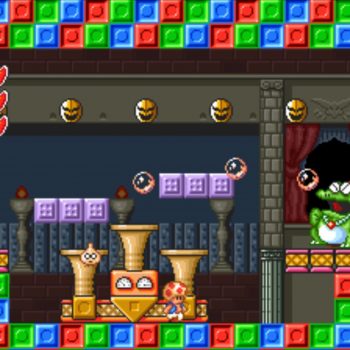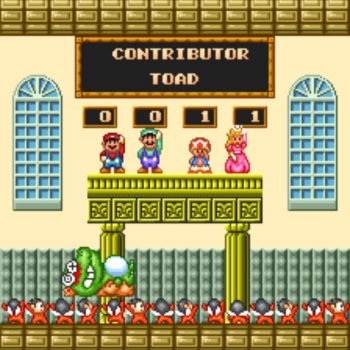Super Mario Bros. 2 (All-Stars Version)
Super Nintendo’s Super Mario All-Stars compilation is one of my favorite cartridges and/or game compilations ever. For the uninitiated, All-Stars is a re-publication of four NES Mario titles: Super Mario Bros., Super Mario Bros. 2, Super Mario Bros 3., and the previously unreleased (in North America) Super Mario Bros. Lost Levels, which was Super Mario Bros. 2 in Japan.
The latter was the entire basis for the American version of Super Mario Bros. 2, which I previously reviewed – and is one of my favorite games of all-time.
SMB2 is such a departure from anything in the series before or since. (If you’re not familiar with the back story on this game, search for it: it wasn’t a Mario game at all originally.)
Regardless, this title, and each game in All-Stars, was given a new coat of paint, with upgraded or totally revamped graphics and sound. Paired with the SNES controller, they were as crisp as ever.
Ideally, I should review them all together, but practically, each game really stands out on its own. (Interestingly enough, Electronics Gaming Monthly, per the All-Stars Wiki entry, handled these titles the same way.)
The All-Stars edition of SMB2 serves as the basis for any of the remakes or offshoots since – and is thus, such a standard-bearer it deserves its own review. Unfortunately, there’s not much that’s different from the original, other than the graphics or sound, to speak of!
And that’s not a bad thing!
As far as platformers are concerned, SMB2 is one of the greatest games ever made. As such, its why Mario is embedded as one my favorite series ever, and one of my most-reviewed – you can go back and play it over and over, almost never tiring of it while also reliving great memories.
Wikipedia notes the following changes in this edition, namely continues and game saves being the big additions that helped this young gamer finally conquer “Mario 2”.
It is possible to change the character after losing a single life, while the original version allows changing it only after completing a level or when the player loses all their lives and chooses “Continue”, making the game more forgiving when choosing a character not adept at some specific level.
The player begins with five lives instead of three, and the slot game gains an additional bonus: if the player obtains three sevens, the player wins 10 lives which is something that was not featured in the original NES version of the game. However, the game has a 99-life limit.
